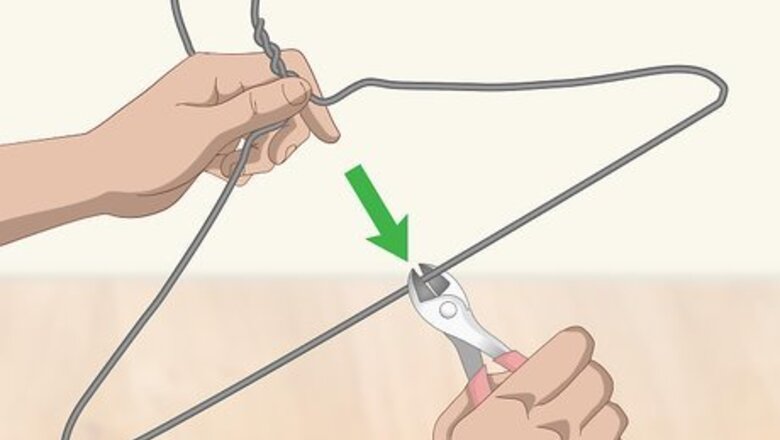
views
Building a Fixed Pulley
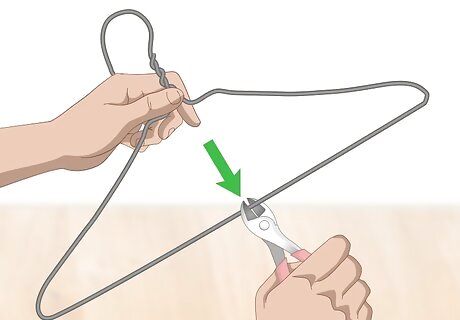
Cut through the middle of a wire hanger. Use a pair of scissors or wire cutters to cut through the bottom of a wire hanger. Make sure your cut is directly in the middle of the hanger so you can easily put your spool on. Leave the top of the hanger intact so you can hang it when you use your pulley. If you don’t have a wire hanger, you can make the axle for your pulley by propping a broomstick between 2 tables or counters instead. Secure it in place by setting a heavy object on one end of the stick.
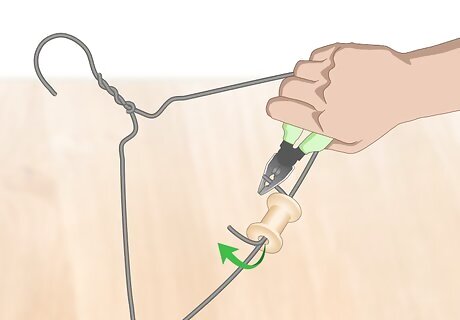
Put a thread spool onto the bottom of the hanger and bend it closed. Gently pry open the cut you made in the hanger and slide a thread spool on it. The size of the spool doesn’t matter as long as it fits onto the hanger. Slide both parts of the hanger through the center of the spool and use pliers to bend the ends into hooks to keep the spool in place. You can buy a spool from a craft store, or you may reuse one that you already have from thread or twine.Tip: If you don’t have spools, you can buy wheels made for pulleys from your local hardware store.
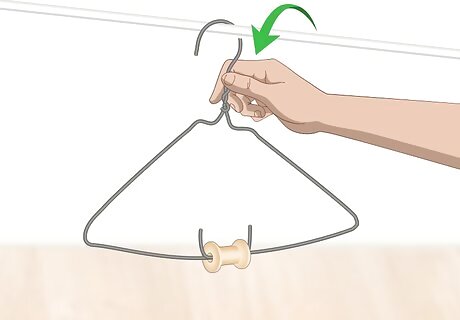
Hang the pulley system on a rod or dowel. Look for an open rod or dowel in a closet, or set one up between 2 tables. If you need to, set a weight on top of the rod to prevent it from spinning or moving around. Use the hook on the hanger to hang it on the rod or dowel.
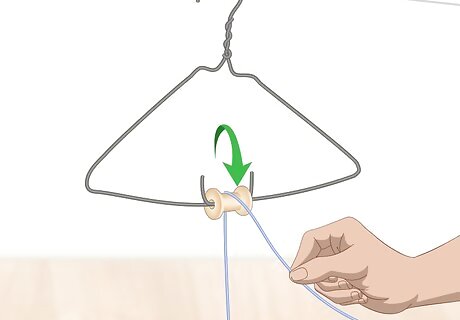
Loop a string over the top of the pulley. Cut a piece of string or twine so it’s about twice as long as the distance from the floor to the bottom of the wire hanger. Drape one side of the string over the spool so both sides are the same length. If you plan on doing a lot of experiments with pulleys, you can tie a small metal hook to one end of the string so it’s easier to hang weights. You can also use twine if you want your pulley to be slightly stronger.
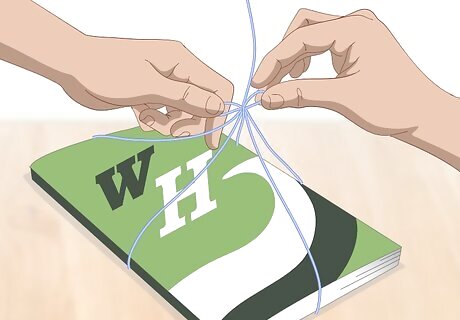
Tie weights to one end of the string. Use things that are lightweight, such as a few washers or a thin textbook, as your weights. Tie the end of the string around your objects so they don’t fall out while you’re lifting them. Let the loose end of your string hang down freely on the other side of the spool. Set the weight on the floor to start your experiment. Pulleys make your work easier by distributing the weight and forces across the different sides of strings. Be careful not to choose anything too heavy since it will cause the metal hanger to bend and deform.
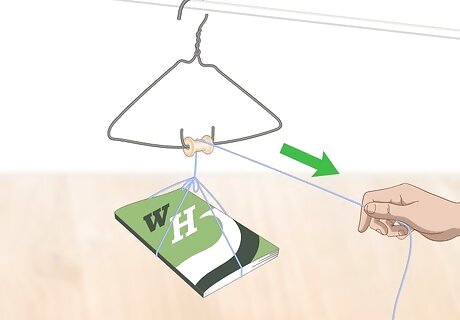
Pull down on one end of the rope to lift up the weight. Grab the loose end of the string and pull it straight down. The spool will rotate around the hanger and reduce the amount of friction, making it easier to lift the weight on the other side. Tie the loose end of the string to a sturdy object if you want to suspend your weights in the air. Keep trying the pulley with different weights to see how much you can lift.
Making a Simple Compound Pulley
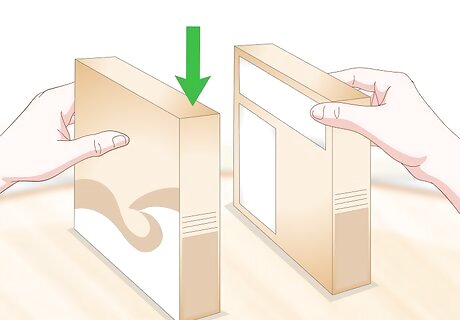
Place 2 cardboard boxes across from one another on a raised surface. Use 2 boxes that are the same size and thickness, such as cereal or packing boxes. Set the boxes on a flat surface, like a table, so they’re about 5–6 in (13–15 cm) apart. Make sure the edges of the boxes are parallel with one another. Thicker boxes will be able to support more weight while thinner boxes are more likely to rip while you use your pulley.
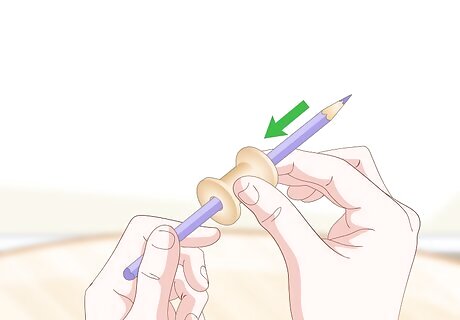
Slide a thread spool onto the middle of a pencil. Use an old wooden spool or one that you bought from a craft store. Slide a pencil through the center of the spool to create an axle that it can rotate freely around. You can also buy pulley wheels from your local hardware store if you don’t have any spools.
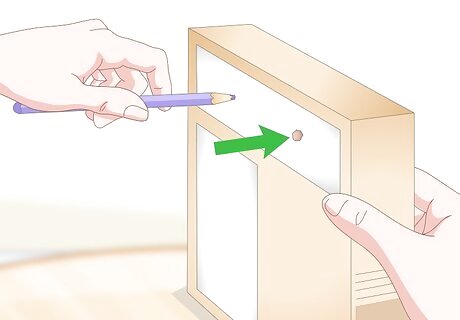
Poke 2 sets of holes in the boxes so they’re 2–3 in (5.1–7.6 cm) apart. Sharpen a different pencil and slowly poke the point through one of the boxes. Make another hole in the second box that lines up with the first hole you made. Make another set of holes 2–3 in (5.1–7.6 cm) from the first set.
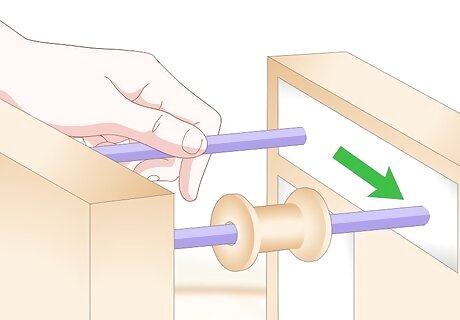
Put both pencils in the holes so they’re perpendicular to the sides of the box. Feed the eraser end of one of the pencils through the hole in one box and the pointed end in the hole across from it. Then put the pencil with the spool in the other set of holes. Make sure the boxes are spaced about 5–6 inches (13–15 cm) apart and the spool is in the center of the pencil. Make sure the pencils fit tightly in the sides of the boxes. If it doesn’t, use modeling clay inside the boxes to hold it in place.
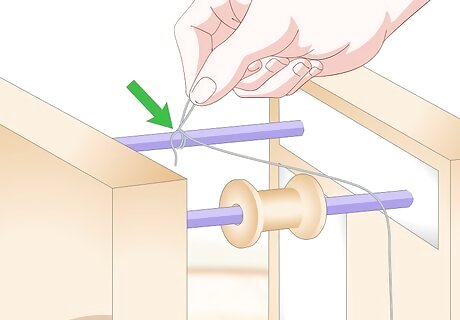
Tie one end of a string to the pencil without the spool. Cut your string so it’s twice as long as the height of your boxes from the floor. Loop the string around your pencil and tie a knot to secure it in place. Drape the loose end of the string over the spool on the other pencil. You can also tie the string around the pencil before you put it in the box.
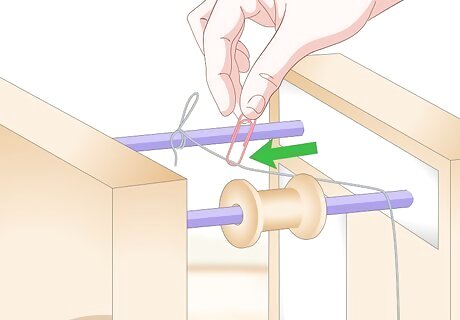
Slide a paperclip onto the string so it’s between the 2 pencils. Feed the other end of your string through the center loop of the paperclip. Keep sliding the paper clip down the string until it’s between the 2 pencils. Let the paper clip rest on the table surface for now. If you don’t want the paperclip to move around, you can tie a knot in the string to secure it in place.
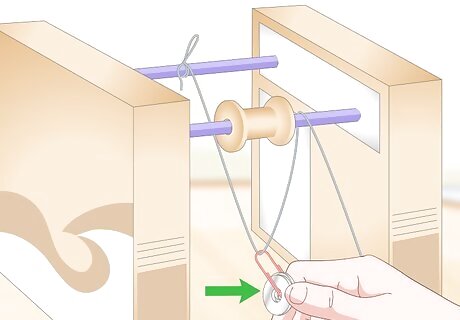
Hang a small load on the paper clip. Bend open the paperclip to form a small hook and slide a few small weights on it, such as washers or metal beads. Make sure the weight rests on the table surface and isn’t suspended in the air. Try using the same size weight that you used on your simple pulley so you can compare the difference between the 2 of them. Heavier weights may rip through the boxes or break the string.
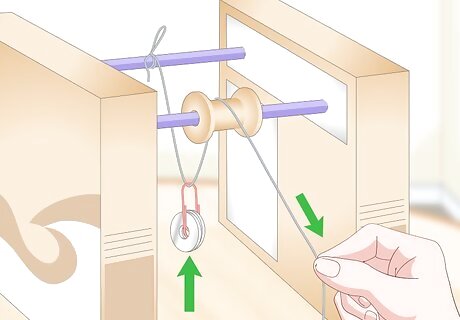
Pull the string over the spool to lift the load. The spool will rotate around the pencil and make the weight easier to lift. Since the other end of your string is tied to the pencil, you will use half the force that it would take to lift it with a single pulley. Because the weight is distributed between the string and the spool, you can move the weight twice as far with the half the amount of force. You can add more spools and pencils to make lifting the weight easier.Tip: Use a spring scale to see how much force it takes to lift the weight. Tie the end of the string to the hook on the spring scale and pull it. Look at the reading on the side of the scale to measure the force it takes to lift it.



















Comments
0 comment